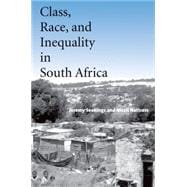
Note: Supplemental materials are not guaranteed with Rental or Used book purchases.
Purchase Benefits
What is included with this book?
| Acknowledgments | p. vii |
| Authors' Note | p. ix |
| Introduction: States, Markets, and Inequality | p. 1 |
| South African Society on the Eve of Apartheid | p. 49 |
| Social Change and Income Inequality Under Aprtheid | p. 90 |
| Apartheid as a Distributional Regime | p. 128 |
| The Rise of Unemployment Under Apartheid | p. 165 |
| Income Inequality at Apartheid's End | p. 188 |
| Social Stratification and Income Inequality at the End of Apartheid | p. 236 |
| Did the Unemployed Constitute an Underclass? | p. 271 |
| Income Inequality After Apartheid | p. 300 |
| The Post-Apartheid Distributional Regime | p. 340 |
| Transforming the Distributional Regime | p. 376 |
| Notes | p. 401 |
| References | p. 405 |
| Index | p. 439 |
| Table of Contents provided by Ingram. All Rights Reserved. |
The New copy of this book will include any supplemental materials advertised. Please check the title of the book to determine if it should include any access cards, study guides, lab manuals, CDs, etc.
The Used, Rental and eBook copies of this book are not guaranteed to include any supplemental materials. Typically, only the book itself is included. This is true even if the title states it includes any access cards, study guides, lab manuals, CDs, etc.